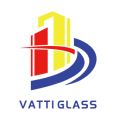
Induction Cooker Panel Glass
Superficie de la estufa de vidrio cerámico negro de 4 mm y 6 mm
El vidrio cerámico es un material cristalino producido controlando la cristalización del vidrio de base, que tiene las ventajas de fabricación del vidrio y las propiedades especiales de la cerámica. Este es un vidrio muy resistente al calor. Es un material de alta resistencia mecánica que puede soportar cambios de temperatura rápidos repetidos de hasta 660 - 850 grados centígrados. Es ampliamente utilizado en chimeneas, pantallas de microondas y hornos electromagnéticos.
|  |
|
|
Ceramic glass features
1.Glass ceramic is rsisting to heat and cold, even to extreme temperature changes.This extraordinary property enables a variety of applications: cooking on glass ceramic appliances day after day , and protecting your fire places or stoves, still enjoying flames view.
2.Among the heat resistant glasses, glass ceramic is really special. Its key property, is low thermal expansion, lower than borosilicate glasses or standard glasses. It means that, unlike most materials, the crystallite glass ceramic will not expand nor contract with heat. It barely changes its dimensions. This is the reason behind efficient and long time resistant cooktops.
Density ρ | approx. 2.6 g / cm3 |
Modulus of elasticity E | approx. 93 x 103 MPa |
Bending strength σbB | approx. 35 MPa |
Coefficient of Linear Thermal Expansion α(20 - 700°C) | (0 ± 0.5) x 10-6 /K |
Specific Thermal Capacity (CP20 - 100°C) | 0.8x103J/(kg x k) |
Specific Thermal Conductivity λ(90°C) | 1.6W/(m x k) |
Resistance to Thermal Gradients(RTD) | Tes, max1) ≤ 700°C |
Resistance to Thermal Shock | Tes, max ≤ 700°C |
Working temperature | 760°C |
Mechanical strength | Density | Elastic seeks | Bending strength |
2.6g/cm³ | 93*103Mpa | 35Mpa | |
Thermodynamic Performance | Average coefficient of linear thermal expansion | Identical temperature difference | Thermal shock resistance |
a(20-800℃):(0±0.5)*10-6/K | (RTD) ≤760℃ | Tes max≦760℃ no break | |
Application Temperature and Continuous operating time | Application temperature | Continuous operating time | |
560℃ | 20000h | ||
610℃ | 9000h | ||
660℃ | 4500h | ||
710℃ | 1200h | ||
800℃ | 500h | ||
Chemical performance | Acid resistance | Alkali resistance | |
DIN12116 HGB1 | DIN ISO719 HGB2 | ||
Glass Variety | Transparent microcrystalline glass,Dark brown microcrystalline glass with ball-point | ||
Machinable shape | Square,circle,R-corner and any irregular shape | ||
microcrystalline glass Application | Wave soldering, microwave oven, Convection Oven, electric radiator, fireplaces, induction cooker glass plate. High-Performance flood light, metal halide lamp, infrared dryer,etc and Photovoltaic solar equipment shield | ||
With the increase in gas prices, the cost of the catering industry, and the perception of cooking without open flames, the number of commercial induction cookers has increased. The demand for concave glass-ceramics will also increase accordingly. Commonly used thickness of 12 ~ 20mm commercial induction cooker plane microcrystalline glass plate conventional size: 250 × 250mm, 300 × 300mm, 350 × 350mm, 450 × 450mm, 500 × 500mm, 600 × 600mm and so on. The conventional dimensions of the concave glass ceramic used in the commercial induction cooker are: diameter 200 mm, diameter 300 mm, diameter 400 mm, diameter 500 mm, and the like.